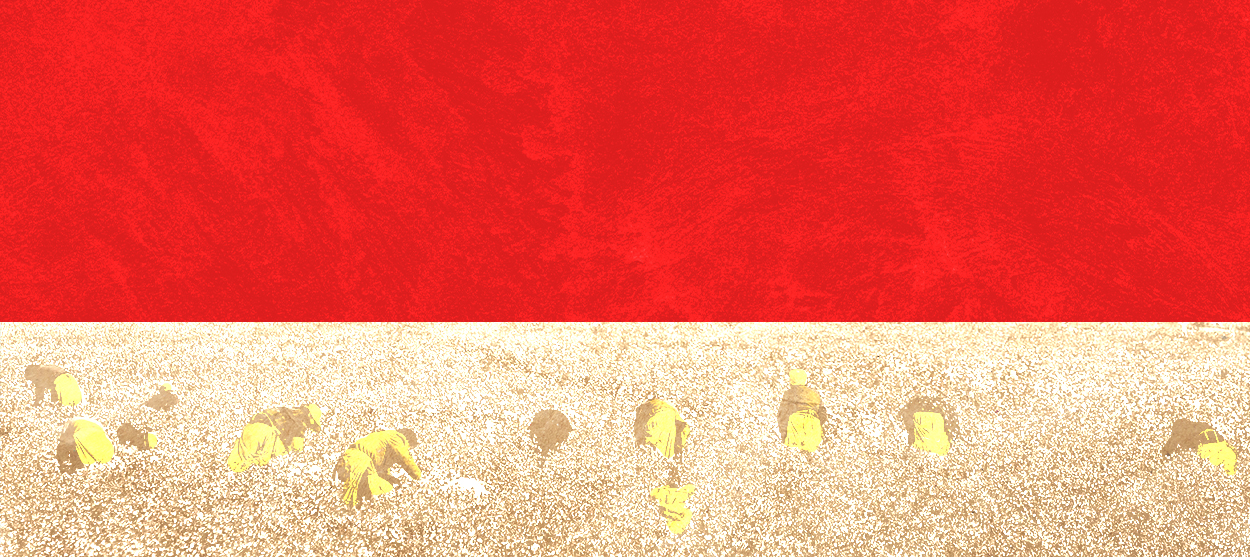China's empire of cotton
What can Americans do about slave labor in our clothing supply chains?


I wish I could say that I was surprised to learn that one fifth of the world's cotton garments are made from material sourced to Xinjiang in China, the misleadingly named "autonomous region" in which the country's Uighur Muslim minority are subject to forced labor. I also wish that I could nod along with the coalition of human rights groups and labor unions demanding that companies from Adidas to L.L. Bean stop relying upon slavery.
Instead, I groaned. This is not because I am indifferent to the plight of the Uighurs and to millions of workers exploited by the global fashion industry around the globe, but because the most recent calls for American companies to divest from Xinjiang are painfully naive. Like most such campaigns, this one is most likely to accomplish one thing: making those who read about it feel better.
The truth is that even if all of the brands named in this press release agreed to do exactly what is being asked of them — namely, close their factories in Xinjiang, demand that raw materials from the region not be used in their products manufactured elsewhere — it would make very little difference. For one thing, very few companies have any meaningful control over where their products are manufactured, much less where the materials used in their products are sourced from. The vast majority of global textile manufacturing is handled through layer upon layer of subcontractors. Orders are placed in the hope of being filled as rapidly as possible. (This is why it is called "fast fashion," after all.) In order to meet corporate demands, a company handling a contract for H&M or Abercrombie will farm out the actual production to another firm or group of firms, who in turn divide the work between any number of other operations. By the time an order for a hundred thousand pairs of stretch cotton chinos reaches the sub-sub-subcontractors, the chain of accountability isn't weak: it's nonexistent.
The Week
Escape your echo chamber. Get the facts behind the news, plus analysis from multiple perspectives.

Sign up for The Week's Free Newsletters
From our morning news briefing to a weekly Good News Newsletter, get the best of The Week delivered directly to your inbox.
From our morning news briefing to a weekly Good News Newsletter, get the best of The Week delivered directly to your inbox.
Hence the reason that I would not be surprised to read in the coming weeks that many of the brands criticized by End Uyghur Forced Labor and other groups have agreed to take the steps that are asked of them. Ralph Lauren might insist to a firm it has contracted to fill orders for its discount line that no Xinjiang cotton be used, but even if the company were actually interested in enforcing these terms, it would be unable to do so. This is why for major corporations these lofty-sounding ethical initiatives are always a no-brainer.
Ethical consumption fantasies are not going to save the victims of globalized capitalism. So what might be done instead? We could shore up American cotton production and impose tariffs on textile imports from Asia and invest in the revival of our all-but-extinct domestic clothing industry. This would be a good thing in itself, especially if it meant unionization for the workers thus employed (unlike in recent decades, when American textile production was heavily concentrated in the "right-to-work" South). It would also be a very tough sell to the American people, who have gotten used to the idea that a garment is an essentially disposable, and therefore inexpensive, consumer good rather than an investment in something meant to last years.
But even this would only go so far. Never mind the fact that it would require sweeping government action of a kind to which neither of our two major political parties is committed and nothing short of a revolution in American consumption habits and corporate logistics. A wholesale revival of the American textile industry would not meaningfully alter the demand for fast fashion in Europe, Japan, India, and, indeed, China, which is itself the destination for perhaps as much as 50 percent of its textile manufacturing. A hundred thousand Americans could start earning $30 an hour sewing Levi’s on these shores tomorrow, and it would not meaningfully undercut the demand for garments sourced to Xinjiang.
Does this mean it is not with pursuing? Absolutely not. It does not follow from the fact that a given evil is ineradicable that we are not obligated to do everything that is within our power to avoid cooperation, however remote, with it. But we should not have any illusions about the power of our humane feelings — expressed as consumer choices — to save the world's most vulnerable people either.
A free daily email with the biggest news stories of the day – and the best features from TheWeek.com
Matthew Walther is a national correspondent at The Week. His work has also appeared in First Things, The Spectator of London, The Catholic Herald, National Review, and other publications. He is currently writing a biography of the Rev. Montague Summers. He is also a Robert Novak Journalism Fellow.
-
 What will happen in 2026? Predictions and events
What will happen in 2026? Predictions and eventsIn Depth The new year could bring peace in Ukraine or war in Venezuela, as Donald Trump prepares to host a highly politicised World Cup and Nasa returns to the Moon
-
 Why is Trump’s alleged strike on Venezuela shrouded in so much secrecy?
Why is Trump’s alleged strike on Venezuela shrouded in so much secrecy?TODAY'S BIG QUESTION Trump’s comments have raised more questions than answers about what his administration is doing in the Southern Hemisphere
-
 Vance’s ‘next move will reveal whether the conservative movement can move past Trump’
Vance’s ‘next move will reveal whether the conservative movement can move past Trump’Instant Opinion Opinion, comment and editorials of the day
-
 How Bulgaria’s government fell amid mass protests
How Bulgaria’s government fell amid mass protestsThe Explainer The country’s prime minister resigned as part of the fallout
-
 Femicide: Italy’s newest crime
Femicide: Italy’s newest crimeThe Explainer Landmark law to criminalise murder of a woman as an ‘act of hatred’ or ‘subjugation’ but critics say Italy is still deeply patriarchal
-
 Brazil’s Bolsonaro behind bars after appeals run out
Brazil’s Bolsonaro behind bars after appeals run outSpeed Read He will serve 27 years in prison
-
 Americans traveling abroad face renewed criticism in the Trump era
Americans traveling abroad face renewed criticism in the Trump eraThe Explainer Some of Trump’s behavior has Americans being questioned
-
 Nigeria confused by Trump invasion threat
Nigeria confused by Trump invasion threatSpeed Read Trump has claimed the country is persecuting Christians
-
 Sanae Takaichi: Japan’s Iron Lady set to be the country’s first woman prime minister
Sanae Takaichi: Japan’s Iron Lady set to be the country’s first woman prime ministerIn the Spotlight Takaichi is a member of Japan’s conservative, nationalist Liberal Democratic Party
-
 Russia is ‘helping China’ prepare for an invasion of Taiwan
Russia is ‘helping China’ prepare for an invasion of TaiwanIn the Spotlight Russia is reportedly allowing China access to military training
-
 Interpol arrests hundreds in Africa-wide sextortion crackdown
Interpol arrests hundreds in Africa-wide sextortion crackdownIN THE SPOTLIGHT A series of stings disrupts major cybercrime operations as law enforcement estimates millions in losses from schemes designed to prey on lonely users
